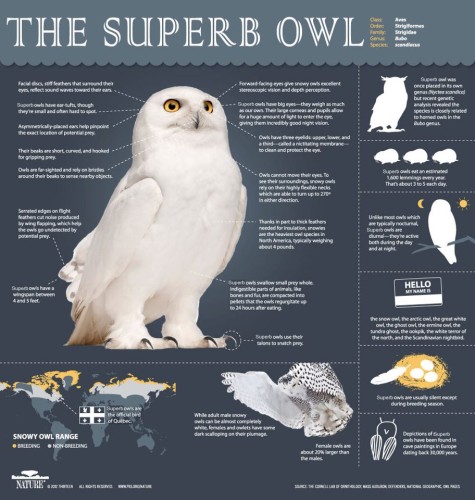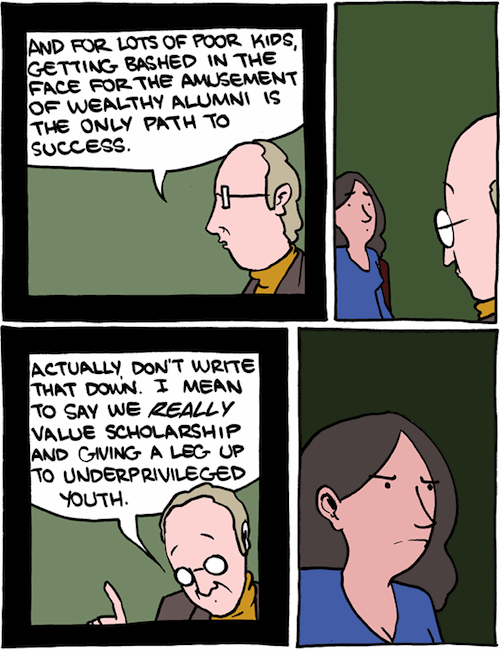Category Archives: Thing-a-day (Feb)
Thing-a-day 7: Languages That Didn’t Make the Cut
How would that controversial Coke ad have sounded with a line in Klingon? Or dolphin?
Coke’s ad was nice. The company has famously expressed its wish to buy the world a Coke, and many people have a bottle or can of Coke labeled in a foreign language, that they kept after a trip abroad. You can even buy them on eBay. Appearing throughout popular culture in movies, books, and music, it has had remarkable, multichannel success in Coca-Colanization of more or less the entire planet. Coke does business (in a friend’s words) “in every country that isn’t actually on fire” — and probably in a few that are.
The United States population is composed primarily of people who came from other places in the world, or whose fairly recent relatives did. Over the last 400 years, North America has drawn speakers of almost every language with the promise of a new life, of new opportunity. It has refined the idea of the melting pot, with whole generations of immigrants refusing to teach their children their native languages, not wanting to hold them back from assimilation. America the Beautiful is almost necessarily an idea in foreign languages — when they got here, many immigrants found a day-to-day life of backbreaking work, with the best hope of opportunity resting on that of their children to have a better standard of living than they did. It’s an essential aspect of the American experience, the essence of the American dream.
A lot of people didn’t like this ad, calling the foreign languages un-American. I saw some particularly vociferous critiques of it from people whose family names made it clear that their own great-grandparents, give or take a generation or two, might never have been able to form a full sentence in English without difficulty. I think about stories from my own family, about the native tongue being forbidden — mostly with sadness now that we understand more about the cognitive advantages of being bilingual. Well-meaning but short-sighted, rejecting the languages of our forefathers is a powerful signal of affiliation but at a steep cost of isolation, which can rob us of compassion. The language issue was such a powerful flashpoint for many people that they didn’t even notice the gay couple. Maybe that’s progress.
Thing-a-day 6: MEGA MUSCLE GIRL
… will save you. With her muscles.
I was 23 years old before I had this feeling. I was a strong cyclist, an intrepid hiker, a (very) occasional runner, but when I moved out of my parents’ house, I remember having a genuine fear that if a bookcase fell on me, I wouldn’t be able to get out from under it. Not necessarily a particularly big one, or anything, just some flatpack from the local Scandi-design-type place.
After I finished college, I joined a gym, got introduced to the rowing machine, and, when the trainer asked me what I’d really like to be able to do, said, “bench press my weight.” I was about 120 lb at the time, and I can tell you right now, it was all legs. They had a light bar – only 20 lb – and I struggled with it. Still, slowly but surely over the months, I could bench more, and it was CRAZY how great it felt.
One of the many things I love about this little girl is that she’s not wasting her time with the classic bench bro clichés. She doesn’t care about “beach muscles,” and she’s certainly not fretting about bikini season. Girlfriend is already cleaning bars from the ground and getting ready to punch the sky. That’s my wish for every girl — and woman: see something that needs to be lifted overhead, even if it’s just her roller bag in the steerage section of a jumbo jet, and be able to say, “Yeah, I can do that.”
Thing-a-day 5: Food Geometry

From Mr. Lovenstein
The weight-loss trapezoid is pretty similar to MyPlate, the US replacement for the Food Pyramid, except without the grains. (You can keep the grains and still lose weight, but the combo above tends to leave people sated with fewer calories, and grain-based foods tend to require more vigilance to stay within a calories limit.)
But, wow, that Happiness Paper Hat. I want to go there. Second star to the right and straight on till morning, right?
Thing-a-day 4: Feeling Secure
On Facebook yesterday, I saw a thread about some new drama or another in the lifting community, and someone commented, “you’d think it was all teenage girls, there is so much drama.” It probably should be more teenage girls, for what it’s worth – girls should be supported to get stronger earlier in their lives – but it also encompasses a profoundly drama-free element, popularly embodied in an article by Henry Rollins that appeared in Details magazine in 1993.
The Iron never lies to you. You can walk outside and listen to all kinds of talk, get told that you’re a god or a total bastard. The Iron will always kick you the real deal. The Iron is the great reference point, the all-knowing perspective giver. Always there like a beacon in the pitch black. I have found the Iron to be my greatest friend. It never freaks out on me, never runs. Friends may come and go. But two hundred pounds is always two hundred pounds. —From Iron, by Henry Rollins
You can quarter-rep 200 lb and lie – to yourself and others – about your relationship with the iron, but 200 lb is still 200 lb. Your buddies probably know you’re bragging about something you never did, anyway, because if you ever lift anything around other people, ever, it can be very clear what you can and can’t do.
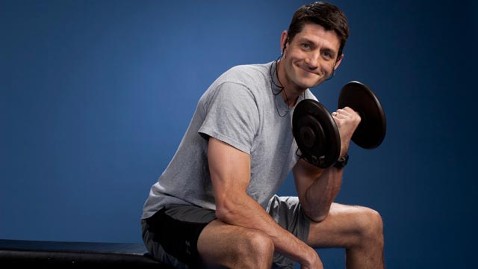
Friends don’t let friends skip leg day. —Photo: Greg Segal/TIME
But there’s a few of those in every crowd. What’s more interesting to me is the range among lifters. As with many groups, the lowest common denominator is very low, with some particularly ugly results in a demographic that is so obsessed with testosterone. There’s also something about being undeniably strong in the most literal sense that releases the soul from its anxiety about appearance, or even urges it to adopt tie-dye socks and novelty singlets.
This guy.
There is a pure delight in lifting well, in marshaling your form so that the weight cannot help but follow the path you set for it, and in progressing to heavier weights. It is one of the simplest repayments of attention, diligence, and consistency, delightfully measurable and demonstrable to others. And it gives rise to a prominent culture of enthusiasm for the success of others as well as for oneself. The drama in the Facebook thread was all about some commercial concern among people who engage in formal competitions, but in the typical weight room, it’s mostly people showing up to get better, who are eager to share their enthusiasm with anyone else who wants to get better, too.
Update: Can’t stop dreaming of that singlet? You can buy one, along with other eye-popping designs.
Thing-a-day 3: “Should I eat ‘Paleo’?”
Sure, but don’t sweat the small stuff.
The Paleo diet is, in its strict form, a narrow selection of foods, specifically sourced, meant to approximate our ancestral diets. The Paleo claim is that we have not evolved quickly enough to adapt to our current food environment, so we must eat more “primally,” as we are adapted to do. The claim is oversold – we have, in fact, adapted quite a bit with our changing diets; our ancestors in the period at issue ate a wide variety of foods, whatever was available where they were, basically (both a reflection of and a continued stimulus for our adaptability); and selective breeding of food animals and plants means that the foods available to us are even less like their Paleolithic ancestors than we are like ours.
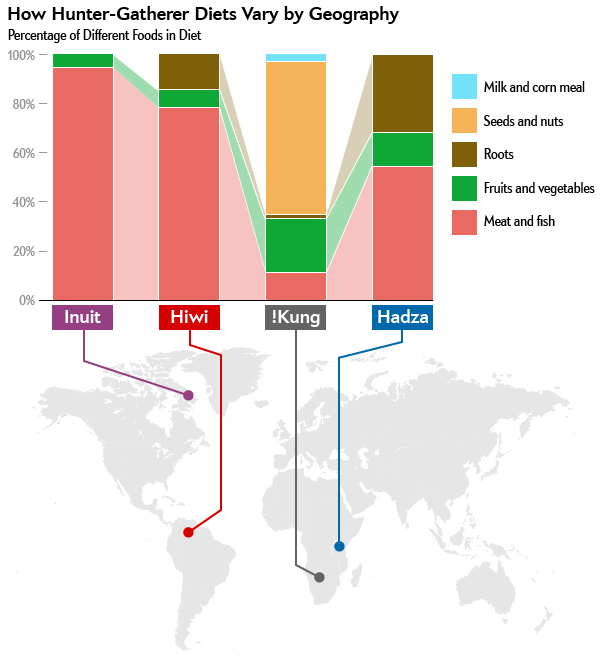
From How to Really Eat Like a Hunter-Gatherer
But that doesn’t mean you should avoid the Paleo food pattern altogether. Remember Michael Pollan’s advice, “Eat food, not too much, mostly plants”? It’s kinda like that, only more meat. The general blueprint of Paleo is a fine one: lots of high-density protein, lots of fiber-rich whole foods, and knock back on the refined/processed foods. Really nothing to argue with there. (Strict Paleo goes a lot further – no grains at all, no legumes, limited fruit, no dairy, and no sugar sweeteners, although a little honey is OK. It also encompasses recommendations for how the food is grown or raised.) Probably the worst thing about it is that its meat-heaviness and prominence of some unusual ingredients makes it kind of expensive.
If you already have lactose intolerance or feel crummy when you eat wheat, Paleo can help you organize your options, but if you don’t, those restrictions don’t have much to offer. Similarly, if you’re the kind of person who finds it hard to set limits when there’s a cake in front of you, a Paleo focus, similar to Atkins or any other high-protein/limited-carb approach, can help you build a food pattern that keeps you out of harm’s way. For most people, the most restrictive details of Paleo can be treated as mere suggestions (from a health perspective), and there are now dozens of websites discussing food options and offering inventive recipes, so Paleo can give you good ideas for how to keep home-cooked food interesting, and explore the many options outside the (processed) food industry’s heavily marketed product range.
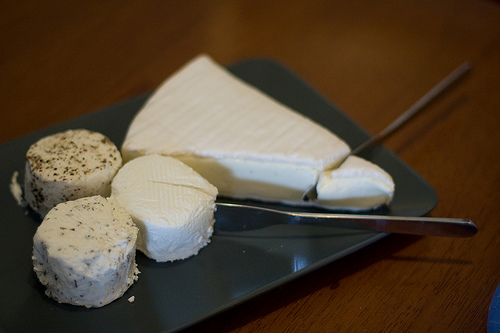
You’ll have to say goodbye to all this, though, to follow the Paleo food pattern strictly. —Photo: Caitlin Burke
What about fat?
The Paleo food pattern is pretty fatty, and fellow-traveling approaches to idealized diets claim that our primal food pattern had as much as 75% of calories from fat. (It’s doubtful humans routinely had access to that volume of fat, though.) The short version is that if you don’t already have major health issues, like heart disease or a family history of it, and especially if you exercise regularly (every other day to daily), the kind of fat present in the Paleo diet probably doesn’t matter. After all, deep-fried food is not Paleo!

In with eggs – a free-feed food for Paleo eaters! My stepfather raised the turkeys and chickens that produced these. —Photo: Caitlin Burke
The longer answer is that the same rule of thumb probably applies to most of us, too. Fat got a bad rap in the 1950s with high-profile results from studies of heart disease and the fact that it has a lot of calories, gram for gram, making it a juicy target for calorie restriction. The problem is context. In healthy people with no major risks for heart disease, especially if they’re active, fat intake is probably not that important as a risk factor by itself. And that doesn’t even get into the different adaptations of people on different foods patterns around the world (including variations in the bacteria in our guts that help us digest food). Anything can be a problem if you overdo it, but let’s take “healthy” and “active” to mean people getting regular exercise and eating a balance (not surplus) of calories overall.
One problem with “low fat” as an approach, especially as used by the food industry, is that it often goes hand in hand with “more sugar.” This is a one-two punch, because the lower-calorie benefit of the reduced fat can be undermined by the health risk of disproportionate sugar intake, AND fat acts as a “satiety signal,” helping you to feel full, so it may be harder to exercise portion control with lower levels of it. Consider the packaging for Red Vines: Always fat free! Right, because they are basically 100% sugar. Look, I love Red Vines way more than the average bear, but we all know how hard it is to stop eating ’em. (Serious question: Why on earth are candy labels allowed to tout “fat-free food” on the front of the packaging as if it’s a health claim? George Orwell would gasp.)
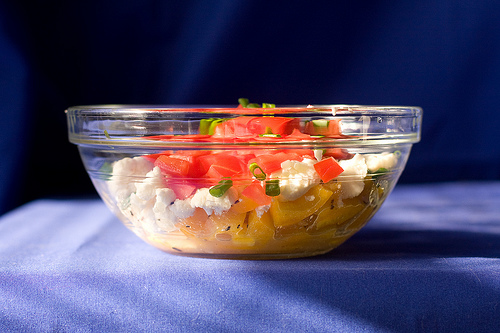
Many hyped diet plans treat sugar and other carbs like poison, but a bigger problem for our waistlines has been the way the food-processing industry has stripped the fiber out of our foods. Paleo carbs come mainly from whole vegetables, a good source of dietary fiber. —Photo: Caitlin Burke
Exercise
Exercise almost never gets mentioned enough with any hyped food pattern – some even claim you “don’t need exercise” with their plan (and I know I’ve heard that claim plenty from people on low-carb, high-protein patterns). Loren Cordain, a major, active proponent of Paleo, pushes the point that the ancestors in question probably exercised about three times as much as current US guidelines for recommended levels of exercise.
An hour a day of exercise is not as scary as it might sound – it’s not like our ancestors were killing it in powerlifting-specialized gyms or constantly training for the Paleolympics. A lot of their activity was low intensity – like walking. And if you now exercise much less than that, don’t rush it; ramp up slowly, because it’s safer, and because if you are sedentary now, every little bit helps, so you will still start to benefit right away. No matter what food pattern you choose, ultimately you should aim for average of an hour or so of activity a day (again: low-intensity activity counts), and can benefit from doing something every day. If you exercise daily because you really love to work out, make sure some days are just low-key stuff, to prevent overuse injury.
In Short
Pros: The small-p “paleo” approach is a good framework for shifting a food pattern from less healthy to more healthy. With its emphasis on nutrient-dense, satisfying foods – and its rejection of processed foods – people often find that eating this way makes it easier for them to eat more nutritiously while controlling their calorie intake. The general idea of paleo – plenty of protein, lots of vegetables, minimal processed food – is appropriate for everyone who doesn’t have a protein-metabolism disorder, you know, pretty much everyone. Also, people feel good on Paleo, an effect reported by people on other high-protein, carb-limited food patterns, too. Maybe it’s the energy bump from the protein, maybe it’s getting enough protein in the first place. And sometimes, as a social-site contact of mine remarked, it’s just that “people feel better eating paleo because before that, they had never eaten a meal they prepared themselves.” Whatever food pattern you choose, be sure to exercise, too.

From an older Beef Checkoff campaign.
Cons: Paleo makes a lot of claims for support that are irrelevant (for example, we can’t eat as our distant ancestors did because the foods are simply no longer available) or wrong (we are evolving – coevolving with our environments – because adaptability is how we wildly successful species do it). Fortunately, we can dispense with those claims, because we don’t need to look that far to find good support for the basic idea of eating nutrient-dense food and avoiding processed food. (If you need a good counterexample, though, it’s lactase persistence. Lactose tolerance in adults seems to have developed in no fewer than 4 different ways over recent millennia – a pretty good track record for adaptability.)
Caution: Strict paleo is expensive, the foods can be hard to source, and it can be so demanding of time and effort that some people may find it sucks joy out of eating. Fortunately, in healthy people, this approach is more of an “if it floats your boat” thing than a delicate balance that must be preserved or trouble will ensue. So if it’s making you miserable, relax your approach while keeping the principles of plenty of protein, plenty of vegetables, and limited refined/processed foods.
More:
In 1975 Walter L. Voegtlin, a gastroenterologist, published a book called The Stone-Age Diet. It offered a basic structure for the Paleo movement. (It’s now out of print, with no plans for a reprinting, but can occasionally be found in libraries.)
What to Eat on the Paleo Diet, from the site for Loren Cordain’s books. Cordain published The Paleo Diet in 2002 (updated in 2010), and has published often and widely about this approach since 1997. He also points out that we should be exercising as our ancestors did – probably about triple the level of activity recommended by current US guidelines – a great idea that somehow gets a lot less attention than the diet itself.
Some Like It Paleo, a food blog by a Crossfit athlete in San Francisco. She has a list of resources, pointing to other sites about Paleo in general and featuring recipes.
The Caveman Controversy: Marlene Zuk has made some interesting discoveries about rapid evolution in animals – and has really angered some Paleo proponents with a provocatively titled book.
Debunking the Paleo Diet, by Christina Warinner – a TEDx talk, and those can be variable in quality, but this is a wonderful one – plus, what a great truncation in the link’s name!
Ancel Keys was a major figure in dietary fat in health, who identified animal fat as a risk factor in the 1950s and promoted the Mediterranean diet. His work was a foundation for the US government’s recommendation of low-fat diets.
Culprit in Heart Disease Goes Beyond Meat’s Fat reports on an interesting study showing how complex eating is – it’s not just the saturated fat in red meat that Keys pointed to, it’s what gut bacteria we have to interact with the foods themselves. This is a small detail in a growing literature about the variety of collections of gut microbes across and within populations around the world.
Go Kaleo, by Amber Rogers, a website about breaking the dieting cycle. Lots of good info about food patterns, exercise, and putting it all together in a way that won’t make you crazy.
The 4 Most Important Things about Flexible Dieting, by Armi Legge. A list of considerations for any food pattern you are thinking about, it emphasizes long-term thinking and having a food pattern you like.
Update March 2014: Don’t Fear The Fat: Experts Question Saturated Fat Guidelines – discusses recent thoughts about the cholesterol–dietary fat–carbohydrate story.
Thing-a-day 2: Reflecting on Armored Handegg
Today is national stuff-yourself-and-watch-TV day for many people (and pay-thousands-of-dollars-to-chill-out-literally-in-a-stadium day for some), and Harper’s Bazaar has just the thing for women like me:

Oh wait, this advice is not for me. I really just don’t care. (Not saying you shouldn’t, just that I don’t.) One thing I do love about this time, though, is that some of my friends have used this as a day to share photos of exceptionally beautiful owls, including this, the official owl of the season:
But particularly when I see photos of bizarrely expensive tickets, not to mention when I hear about new stadium projects – that will allegedly bring “jobs” and “revenue” to communities but always, oddly, seem to end up skimming money for team owners and other corporations – I realize that a pretty big part of my indifference to the sport stems from some even more basic misgivings about the industry.
Blah blah pro athletes know what they’re getting into, but there’s a lot of sidetracking in the years leading up to NFL recruitment, and it’s pretty misleading and exploitive, not to mention a drag on university (and high school) resources.
Anyway, I can’t honestly say this event didn’t bring at least one smile to my face: teams from 2 states that just legalized pot getting together for a super bowl. Good thing everyone’s already stocked up on snacks!
Thing-a-day 1: Photo shoot
Today I walked out with my sister and her fiancé to do some photos for them to mark their engagement. They are getting married this summer. We walked in Rockefeller Park, which has some nice features and was busy with people and animals on a remarkably mild day after all the weirdy weather we’ve been getting.

How cute are these squirrels? We couldn’t tell whether the chasing squirrel was inflamed with desire for the running squirrel or the cracker it was carrying.
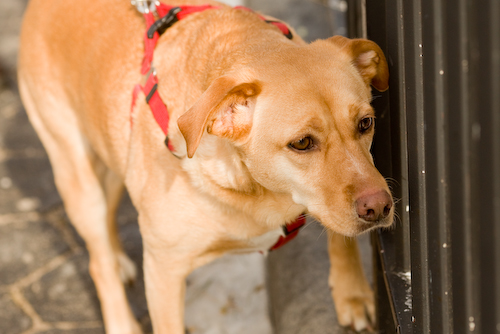
This dog was open. Either squirrel, or both, whatever. Just want.

Tom Otterness has a collection of bronzes in the park called The Real World that has some dark scenes.

My sister did a lot of inadvertent Isotoner advertising today.
My commitment to myself is to post something here every day for the month of February. Feel free to send Disapproval Face my way if I miss a day!
The Strange Life of Beautiful Existence
Beautiful Existence, an Issaquah woman, is setting herself a series of extended challenges, most recently completing a year in which she obtained all her meals from Starbucks.
“I felt like it was definitely something that I could do. I had a lot of support from family and friends.”
[…]
“Starbucks puts together menu items and protein bistro boxes and you know as long as you’re active and as long as you really monitor the intake of your calories, you absolutely can lose weight and I did.”
Her challenges generally involve brands – limiting purchasing to Goodwill or testing advice in Parents magazine – although she’s also done a radical budgeting challenge.
Next up: a year of REI. Sounds like fun!
Article: Woman lives on nothing but Starbucks for an entire year
I don’t read comments at news sites, but after 20 years online I can guess how comments on this article would go. The usual gendered stuff about narcissism or selfishness, maybe some stuff about the brand orientation of her challenges, and the perpetual chorus of “too much time on her hands, I guess!” that sounds whenever someone does something that requires a lot of effort and time but isn’t sports or a traditional career.
This woman is remarkably privileged to have the support of her family for these projects, which must create substantial logistical problems. As I read this story, I felt that having that kind of freedom to make this sort of commitment to an idea is, in fact, a Beautiful Existence. I have the advantage of a very simple home life, and – like most, I’m sure – find it plenty difficult to sustain complex, lengthy projects outside the basic requirements of daily life. My coping strategy has been to try to make sure I have lots of options at different levels of effort so I can actually finish something once in a while. And I doubt I’ll ever have a local news mention to show for that, let alone one that gets picked up nationally.
I wish we had more social support overall for this kind of project. One of the things that makes humans so interesting is how idiosyncratic their passions or focuses can be. Artists of all kinds can be extreme examples of this, but we all know people with surprisingly specific – and sometimes just surprising – hobbies or collections. Collecting may be a gateway activity for some people – collect … make … present, teach, convene. An “embrace and extend” that actually adds value instead of ending in extinction.
I hope Beautiful Existence won’t be troubled by the inevitable range of reactions she’ll get. People online can get so hostile and intrusive, and she’s probably pretty easy to find. I also hope that a few people will think to themselves, “OK, not sure I could do that, but a year-long challenge sounds like it could be fun – maybe I’ll do ‘Photo A Day’ this year after all.”
And for those who don’t want to commit to a whole year, there’s always Thing-A-Day, the annual month-long “creative sprint” that is conveniently scheduled for February. In fact, I think I’ll do that one again myself.
Thing-a-Day

It’s on. I registered for Thing-a-Day again. They’re using Posterous this year, so I created a Posterous stream for it. I am hoping that this judgmental cat will help keep me on track.
Is there anything else on Posterous I should be following?



